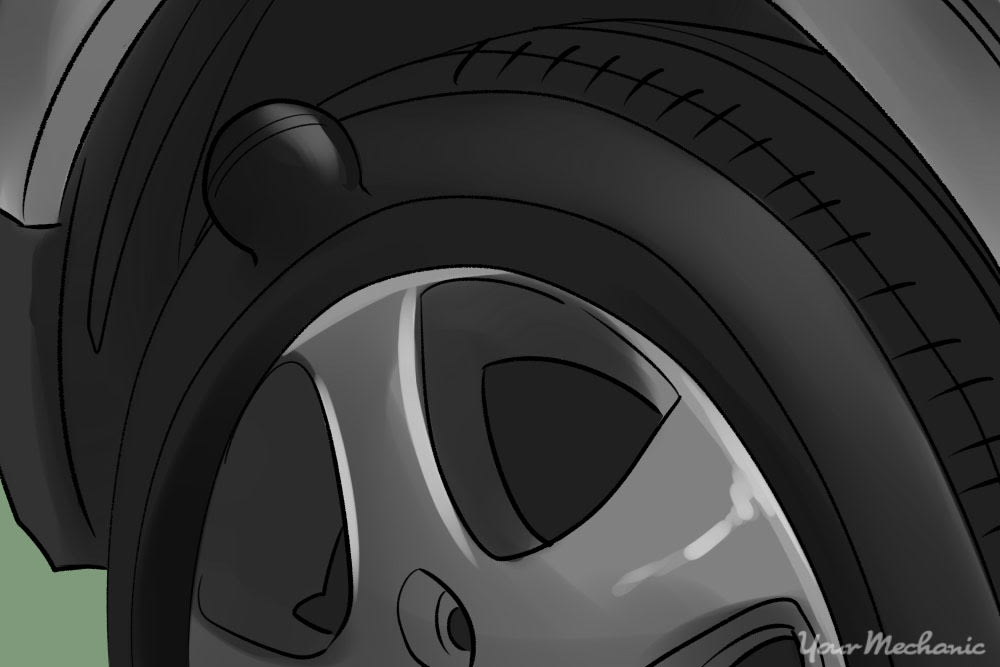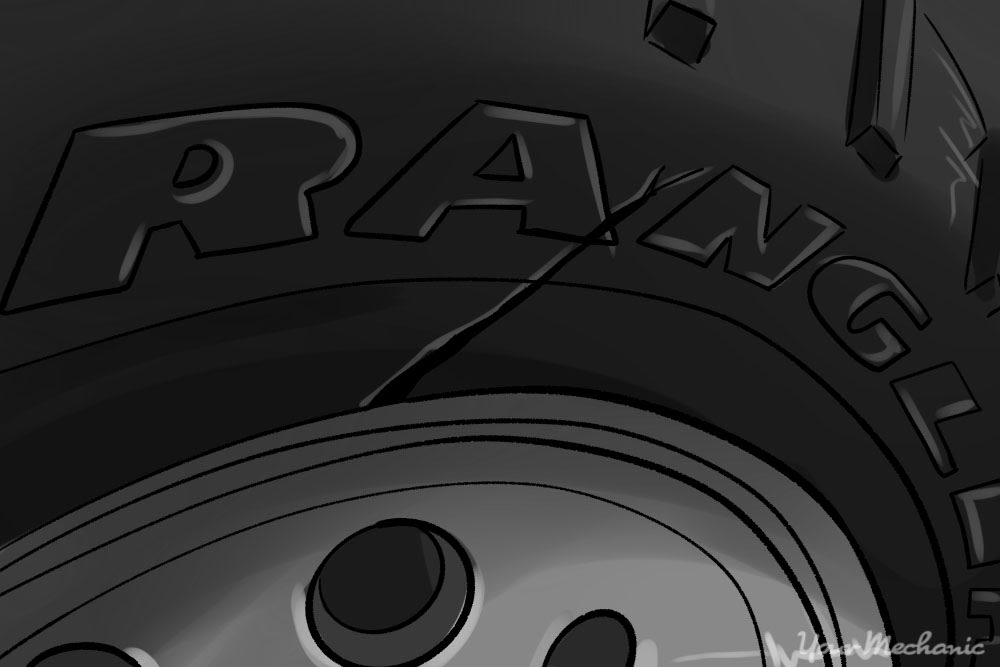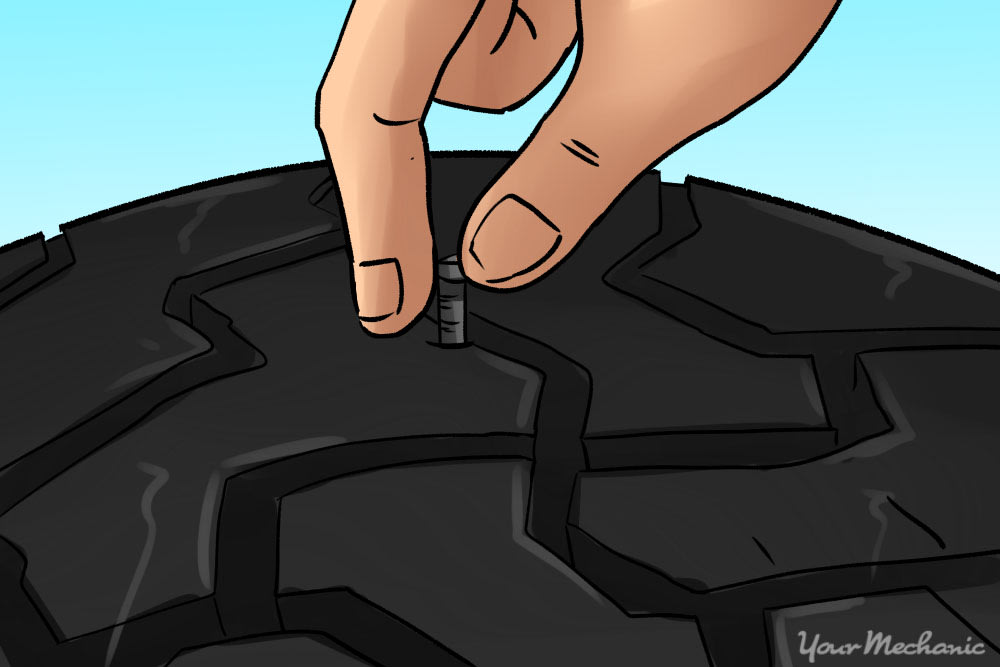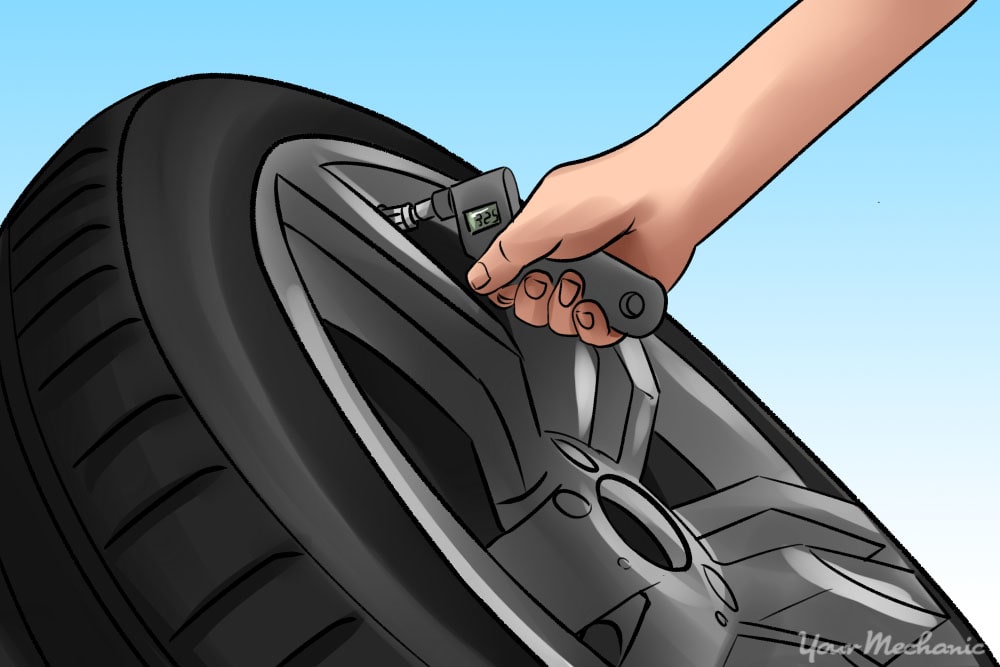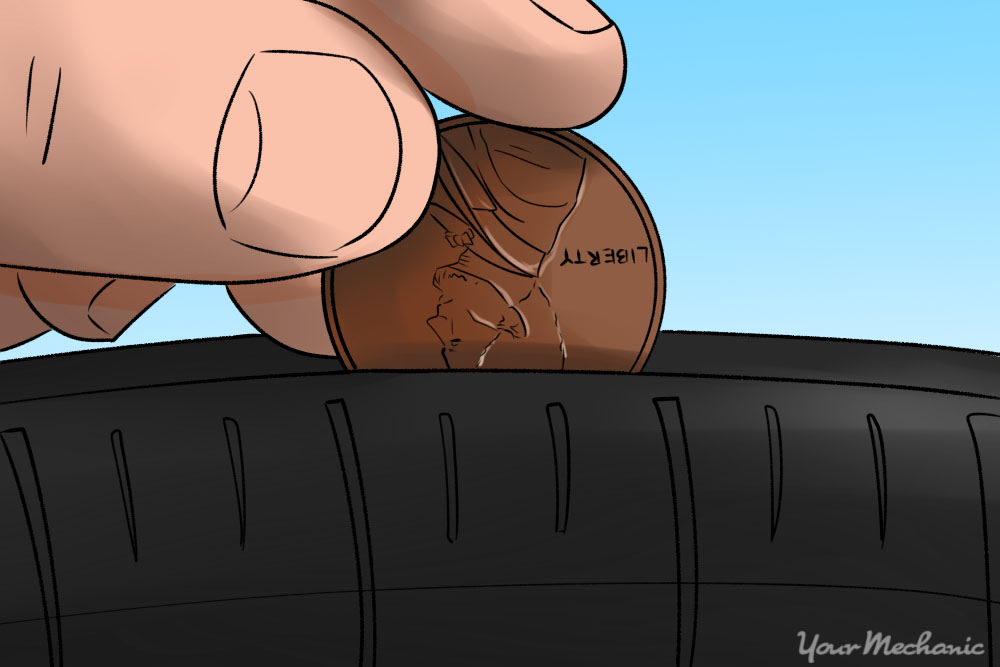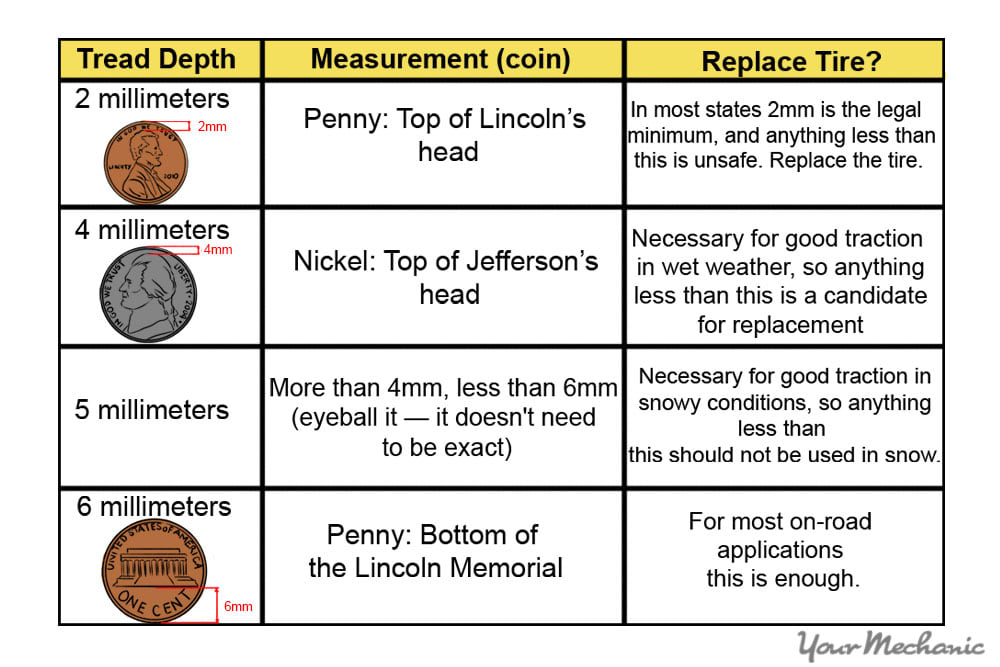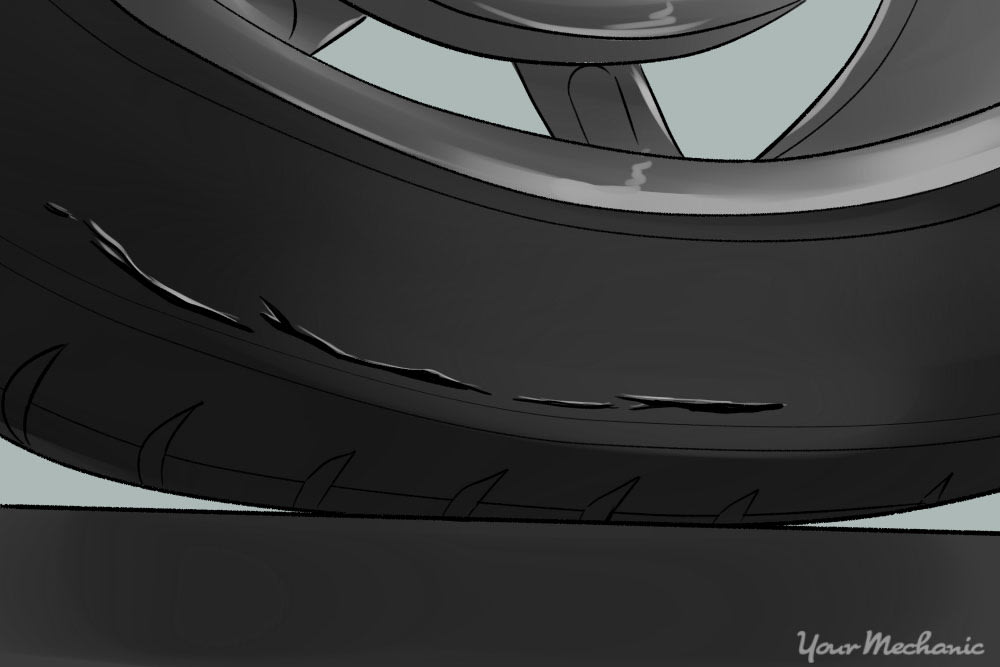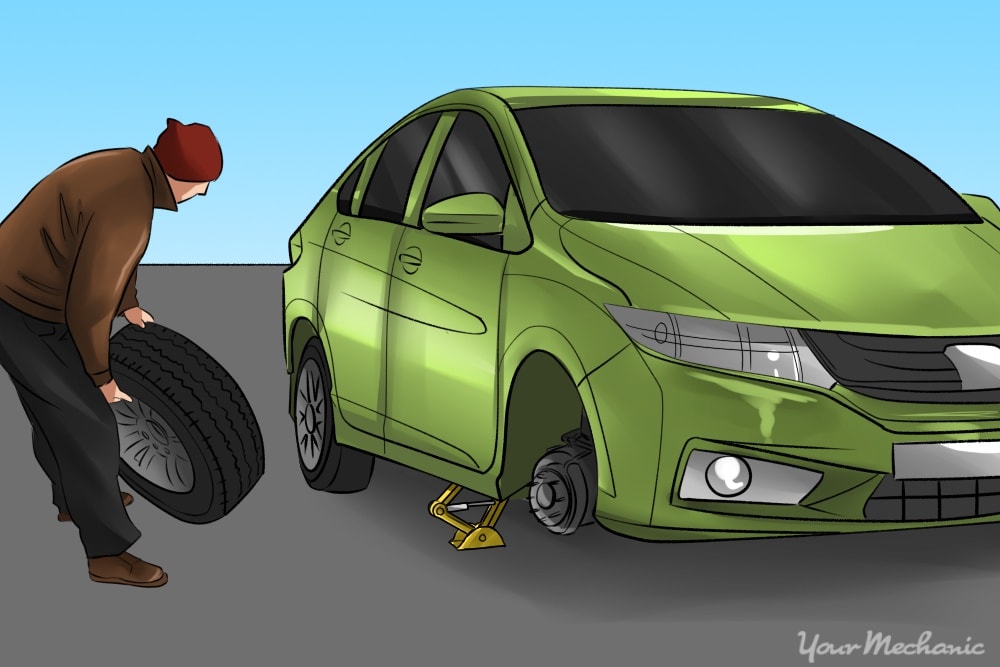

Most car owners know that tires don’t last forever, and that driving on old tires can be unsafe. When you have a flat or ripped tire you know that your tire needs to be replaced but it's not always that black and white. There are several other indications that mean you should replace your tires for optimal safety and drivability, including:
- Damage
- Tread wear
- Performance issues
- Age
- Seasonal needs
Each of these issues has its own complications, explained below.
Factor 1: Damage
Some tire damage is obvious, because it causes the tire to go flat; if a tire shop tells you it can’t be repaired safely, you’ll need to replace it. But some tire damage doesn’t cause a flat, yet does mean you should replace the tire:
A visible “bubble” in the tire, usually in the sidewall but occasionally in the tread area, means the tire has sustained serious internal damage; it is not safe to drive on and must be replaced.
A deep cut, which you’ll probably notice only if it’s on the sidewall, may go deep enough to render the tire unsafe; ask your mechanic.
If you see an object imbedded in the tire tread, what to do depends on whether it’s likely that the object has penetrated all the way through. For example, a small rock may get lodged in the tread, which is no big deal. But a sharp object like a nail or screw is another matter. If you see such a penetrating object:
Don’t drive any farther than you have to before having the tire repaired; leaving it in to “seal in the air” probably won’t work for long.
Avoid using canned flat-sealer products, which can cause long-term problems.
You can try repairing a small puncture yourself (after removing the object), which is fairly straightforward with kits you can get at your auto parts store. Follow the manufacturer’s directions and be sure to check your air pressure regularly after the repair.
Mechanics and tire shops can repair some punctures, but some punctures cause structural damage and can’t be repaired. If you can’t repair it, you’ll need to replace the tire.
Factor 2: Performance
The sort of “performance” that means a tire needs replacement is one of two different problems: the tire needs air at least once a week, or there is a vibration in the ride or the steering wheel (or there is a humming or buzzing noise coming from the tire).
Checking your tires’ air regularly is important for both safety and fuel economy. If these checks show that one of your tires gets low (check the owner’s manual for the recommended pressure) after a week or less, then your tire may need to be replaced. Leaks can be caused by cracked or dented wheels, too, so have a qualified mechanic check for the source of the leak.
Vibration in the ride or the steering wheel can be caused by worn tires, but the more common reason is wheel balance. For example, a balance weight may have fallen off. A hum, buzz, or whine that seems to be coming from your tires also may indicate a balance issue. Tire shops can check this balance easily and having a wheel rebalanced is much less expensive than replacing a tire, so look into this before settling on replacement.
Factor 3: Tread Wear
Tires should be replaced when their tread is too worn, but how worn is too worn? The answer is twofold: first, if the wear is dramatically uneven (i.e., much more on one side than on the other, or in only some spots on the tire) you’ll probably need to replace the tire but, just as importantly, you’ll want to get the wheels aligned at the same time because poor alignment is the cause of most uneven wear, and you’ll want to keep from having the same problem with your new tire.
But if the wear is fairly even across the tread (or a bit more on the outside edge, which is also normal), then you’ll need to measure the tread depth. Here’s how to do that using two “tools” that are pretty common: a penny and a nickel.
Step 1: Take out a penny. First, take the penny and turn it so that Lincoln’s head is toward you.
Step 2: Put the penny in the tire. Place the penny’s edge into one of the deep grooves in the tire tread, with the top of Lincoln’s head toward the tire.
- The penny should go far enough into the groove so that at least a little bit of Lincoln’s head is hidden within the groove. The top of his head is 2mm (2 millimeters) from the edge, so if you can see all of his head there is 2mm or less of tread.
Step 3: Find a nickel. If there is more than 2mm of groove (i.e., some of Lincoln’s head is hidden), break out your nickel and do the same thing, this time with Jefferson’s head. The top of his head is 4mm from the edge of the nickel, so if you can see all of his head you have 4mm or less of tread. See the table below.
Step 4: Turn the penny around. Finally, if you have more than 4mm of tread go back to the penny but turn it around.
- Do the same thing as before but now you’re using the distance from the edge of the penny to the bottom of the Lincoln Memorial, which is 6mm. If you have a full 6mm of tread (i.e., the groove is to or beyond the bottom of the Memorial) you’re probably fine; if you have less, estimate how much (remembering that you know you have more than 4mm) and then see the table.
Deciding when to replace a tire can depend on where you live and what you expect. Just 2 millimeters means it’s time for a new tire while more than 5 millimeters is enough for most cars - anything in between depends on whether you expect the tire to perform well in the rain (meaning you need 4 millimeters) or the snow (5 millimeters or more is best). It’s your car and your call.
Factor 4: Age
While most tires wear out or get damaged, some manage to make it to “old age.” If your tires are ten years old or more, they definitely need replacement, and six years is a safer maximum age. In very hot climates tires may age even faster than that.
One age-related issue you can check for: If the sidewalls show a network of cracks like a spider web, the tire is experiencing “dry rot” and needs to be replaced.
Factor 5: Season
In very cold or snowy climes, many drivers choose to keep two sets of tires, one for winter and one for the rest of the time. Modern winter tires are far improved from those of a generation ago, giving vastly better traction in snow and on freezing-cold pavement than summer or even “all season” tires. The cold weather performance comes at a cost, though, in wear (and therefore cost), fuel economy, and sometimes noise, which is why it can be beneficial to have two sets. If you’re in the snow belt and have room to store a second set of tires, this may be worth looking into.
Things to remember when you’re replacing a tire
If one or more of your tires needs to be replaced, there are three more factors to consider:
- Whether to replace other tires at the same time
- Whether to get an alignment
- How to drive with your new tire
In general, it’s advisable to replace tires in pairs (both fronts or both rears) unless the other tire is fairly new and the replacement is because of unusual damage. It’s also a very bad idea to have mismatched (in size or model) tires from side to side, as the different handling characteristics can be dangerous in an emergency.
- Tip: If you’re replacing two tires and your car uses the same size tire on the front and the rear (some don’t) then it’s best to put the new tires in the front of a front wheel drive car and in the rear of a rear wheel drive car.
It’s best to have your wheels aligned when you replace tires, unless:
- It’s been less than two years since your last alignment
- Your old tires didn’t show any unusual wear patterns
- You haven’t been in any accidents or hit any bumps very hard since your last alignment
You’re not changing anything else (such as tire size)
Warning: If you get one or more tires replaced please remember that new tires are sometimes coated with substances that make them slick for a little while; drive particularly carefully for the first 50 or 100 miles.
If your tires are wearing unevenly or if one tire is wearing faster than the other be sure to have a professional mechanic, such as one from YourMechanic, inspect your tires to find out and fix the problem. Driving on worn tires can be dangerous as they don't provide enough grip on the road.


